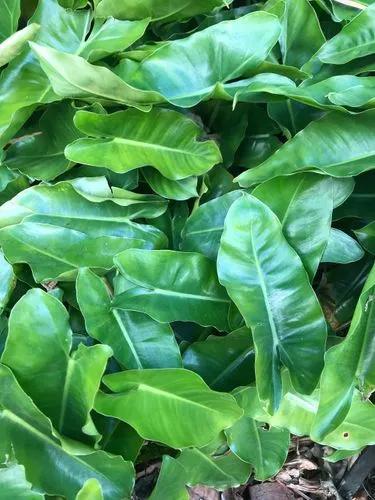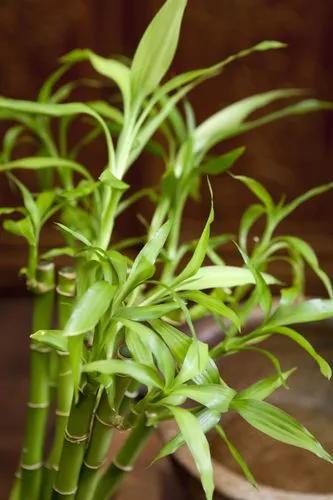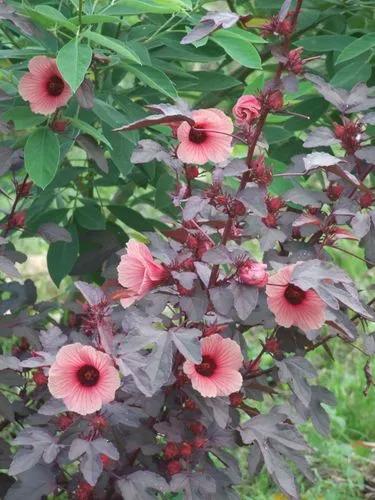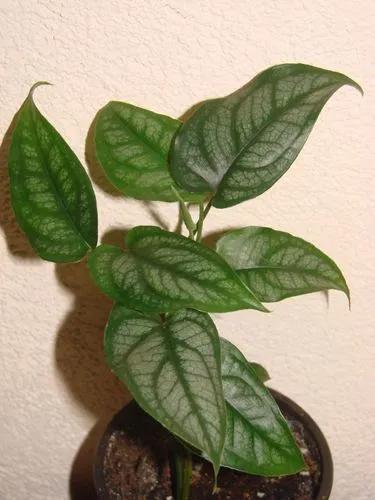Dracaena fragrans is a slow growing shrub, usually multistemmed at the base, mature specimens reaching 15 m (49 ft) or more tall with a narrow crown of usually slender erect branches. Stems may reach up to 30 cm (12 in) diameter on old plants; in forest habitats they may become horizontal with erect side branches. Young plants have a single unbranched stem with a rosette of leaves until the growing tip flowers or is damaged, after which it branches, producing two or more new stems; thereafter, branching increases with subsequent flowering episodes.[1][3] The leaves are glossy green, lanceolate, 20–150 cm (7.9–59.1 in) long and 2–12 cm (0.79–4.72 in) wide; small leaves are erect to spreading, and larger leaves usually drooping under their weight. The flowers are produced in panicles 15–160 cm (5.9–63.0 in) long, the individual flowers are 2.5 cm (0.98 in) diameter, with a six-lobed corolla, pink at first, opening white with a fine red or purple central line on each of the 7–12 mm (0.28–0.47 in) lobes; they are highly fragrant, and popular with pollinating insects. The fruit is an orange-red berry 1–2 cm (0.39–0.79 in) diameter, containing several seeds.
Dracaena Fragrans Lindenii Care
Dracaena Fragrans Lindenii



How to Care for the Plant

Water

Keep the soil evenly moist but not soggy during the growing season (spring to fall). Reduce watering in the late fall to winter. However, never let the soil completely dry out.

Fertilizer

Corn plants prefer organically rich soil. Use a balanced liquid fertilizer about every month throughout the growing season, and feed sparingly or not at all over the winter.

Sunlight

The ideal indoor location for this plant is near a window with filtered sunlight. Too little light will result in the leaves losing their color variegation and might stunt the plant's growth.

Soil

A loose, loamy potting soil mix is the best option for growing corn plants. Make sure the soil has good drainage because roots don't do well in standing water.

Temperature

Corn plants do best in temperatures from 60 to 75 degrees Fahrenheit. Avoid exposing them to temperatures below 50 degrees—if you have moved plants outdoors for the summer, make sure to bring them back indoors before temperatures reach this point.

Additional

The corn plant is not considered toxic to humans, although some sensitive individuals may have an allergic skin reaction when touching the plant.

Popularity

126 people already have this plant 20 people have added this plant to their wishlists
Discover more plants with the list below
Popular articles






